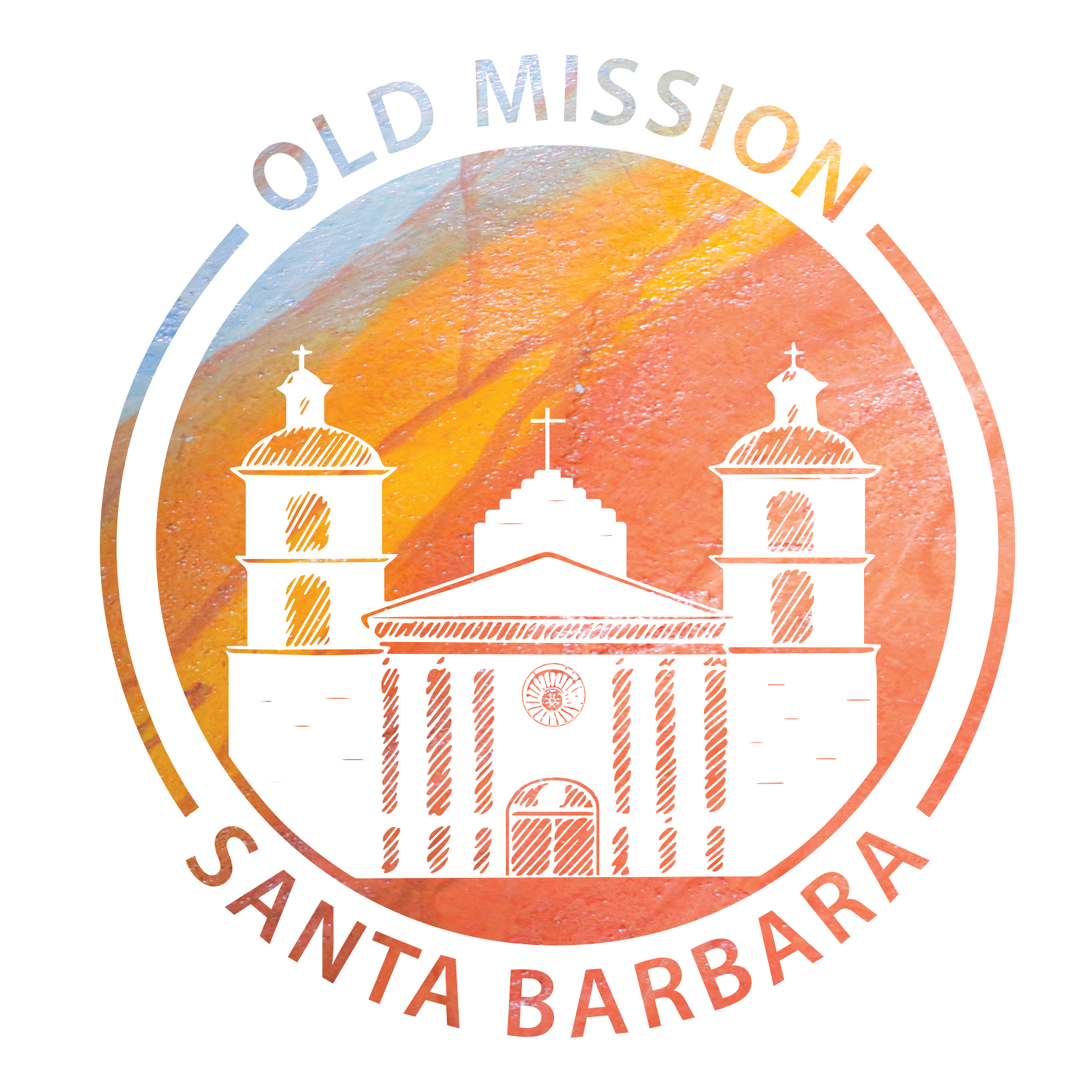Old Mission Santa Barbara Tour:
“The Inside Story”
The Mission Church
Additional Audio Stops:
Previous Audio Stops:
Today you are standing in the fourth church constructed on this site. Old Mission Santa Barbara was founded in 1786 and the first church was built was a simple structure. Almost immediately construction began on a larger church. The third adobe church had been finished in 1794 and lasted until the great earthquake of 1812. This fourth church was finished in 1820 with walls of solid sandstone 5 ½ ft. thick and stone buttresses, with a height of over 27 feet. The chandeliers are original, however they were retrofitted to operate with electricity, but still have candles which are lit for special ceremonies and events, such as Christmas Eve midnight Mass and Easter Vigil Mass.
On Winter Solstice a Mass is celebrated that includes Chumash music. Those in attendance can watch the sunlight move across the reredos or backdrop behind the altar to light up the crucifix. The walls glow with palette of colors and design reflecting the local light and environment as interpreted by Chumash artists. Although touched up through the years there is always great care taken to maintaining the original designs. The church interior is a reflection of the Chumash and Mexican artists and artisans who built and decorated the church. Their “voices” are present in the colors and artistry which reflect the local natural world, and in the stonework of the walls, and holy water fonts hewn by their hands.
The religious art of the Missions was mainly created in Mexico and brought to the Mission. On the wall to the left of the altar is a painting of “The Assumption and Coronation of the Virgin.” The Holy Trinity is depicted above her as three identical male figures. This type of depiction was condemned by Pope Benedict XIV in the 18th century and is rarely seen now. It was replaced by representing God the Father as an older man, Christ the Son as a younger, and the Holy Spirit as a dove, often hovering in the space between the two male figures. Another painting with the Trinity depicted as three identical figures can be found in the Mission museum.
For Franciscans, depictions of saints and events in Christian history are a way of evangelization that is teaching and sharing about the Catholic faith. In the backdrop behind the altar are statues depicting the Immaculate Conception; St. Francis, St. Dominic; St. Joseph; Christ; and St. Barbara. To the right of the altar is Christ on the Cross. Other paintings in the church include, the 14 Stations of the Cross; Our Lady of Guadalupe; the Archangels St. Michael, St. Raphael, and St. Gabriel; The Women Saints; Purgatory; and Hell. In the Mission Era, intense depictions of purgatory and hell were used to teach the Christian belief that a person’s conduct on earth determines their eternal fate. Today we can view these paintings as reminders of our responsibility to regularly practice the Works of Mercy as acts of both conversion and charity. Through acts of compassion—such as feeding the hungry, visiting the imprisoned, comforting the grieving, and extending forgiveness—we help our neighbors with both physical and spiritual needs.
A crypt lies beneath the altar area accessed by lifting the large floor plaque. Listed on the plaque are friars and distinguished citizens buried here beginning with Fray Antonio Paterna, a native of Palma, Spain and the first Franciscan to die in Santa Barbara. Stairs were carved into the earth but eventually wore away and now a ladder is used to access a hallway which takes you to a small room with a primitive altar carved into the back wall. Out to the sides and front are five burial vaults. In 2011 the crypt was renovated and continues to be monitored today for structural integrity and safety.
In addition to being a historic site, the Mission Church continues to serve as a gathering place for spiritual reflection, prayer, and worship. The modern statues in the alcoves in the back of the church were commissioned by the St. Barbara Parish to mark the new millennium.

